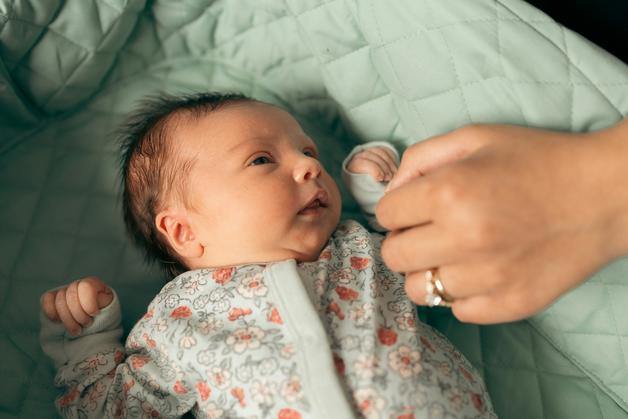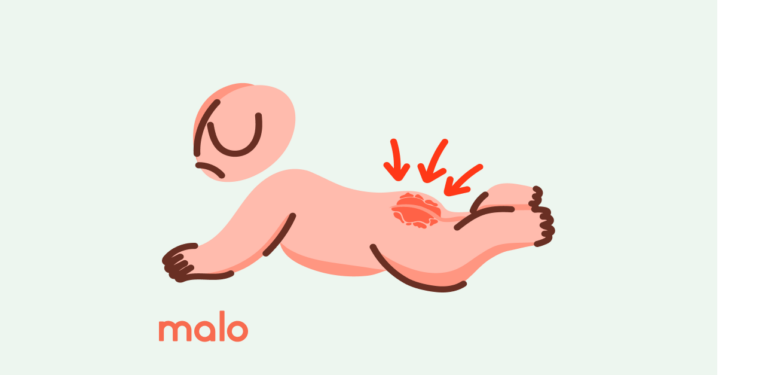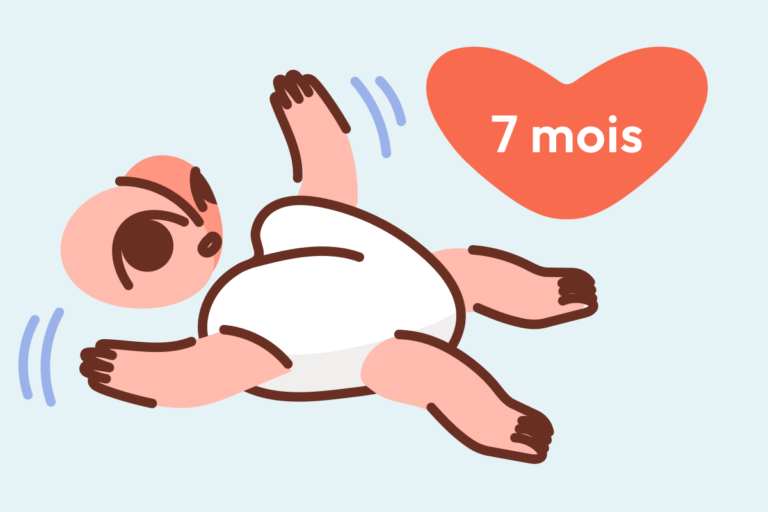Every parent knows the instinctive urge to soothe a baby’s discomfort, especially when that discomfort is written across their skin. The sight of rough, red, or bumpy patches can be alarming—baby eczema is no stranger to sleepless nights or worried days. The questions come quickly: Why is my baby’s skin so dry? Is it something we did? Could it be allergies, or just sensitive skin? Understanding what baby eczema truly is, recognizing its challenging symptoms, and learning effective care strategies can transform your sense of helplessness into newfound confidence. Here, clarity meets compassion—with every section designed to put proven solutions and practical reassurance in your hands.
Understanding baby eczema: definition and first signs
Baby eczema—sometimes called atopic dermatitis—emerges early, often before the age of one. It’s a chronic, inflammatory skin condition marked by dry, itchy, and inflamed patches that usually take up residence on those soft, kissable cheeks, the tender scalp, and the folds of elbows and knees. The skin, remarkably delicate in infants, responds to environmental and genetic influences with a kind of hypersensitivity. Imagine witnessing patches that shimmer pink or crimson on light skin, yet morph into hues of brown, gray, or even purple on deeper skin tones—a reminder that no child is untouched by variation.
Recognizing those first symptoms is less about panic and more about keen observation. Does your baby scratch, seem restless, or wake often at night? Does the skin appear rough, flaky, or oddly shiny? Early diagnosis isn’t just medical—it’s parental vigilance shaped by lived experience. In families where eczema, asthma, or allergic rhinitis (hay fever) linger in the medical history, these first signs are more than coincidence. Genetics often steer the ship, though environmental triggers frequently rock the boat.
What does baby eczema look like? Tracing the visible and invisible
The signature look of baby eczema is not one-size-fits-all. Sometimes, you spot classic dry patches with a cracked texture—other times, tiny blisters or a faint ooze signal progression. Cheeks, forehead, scalp: ground zero for most babies. As months pass, the creases behind knees or elbows join the list, their vulnerability exposed by constant motion and friction. Oddly, the diaper area stays blissfully free—protected by its moisture-rich microclimate.
It may come with an itch so relentless that sleep is no longer a sanctuary. Up to 80% of little ones with baby eczema struggle to rest through the night, their frustration mirrored in tired eyes and increased daytime fussiness. For parents, the cycle is as much emotional as physical.
Alarm bells should ring louder if scratching leads to yellow crusts, swelling, or weeping skin—signals that infection may be looming. These situations warrant prompt, professional advice.
Roots of baby eczema: genetics, environment, and the skin barrier
Why does baby eczema blossom in some infants but not others? The answer weaves together family history, structural quirks in the skin’s barrier, and thorny immune reactions.
A mutated filaggrin protein—sometimes passed down—weakens the skin, making it porous, less able to hold moisture, and prone to irritation. Environmental players eagerly join the dance: dust mites, animal dander, pollen, cold winds, even synthetic or wool clothing can set off flares. Certain detergents, rough or scratchy clothing, and sudden temperature shifts act as irritants, destabilizing the delicate equilibrium of infant skin.
The immune system, still learning friend from foe, often overreacts. Picture a defense gone awry: harmless substances spark chronic inflammation, manifesting as classic eczema rashes.
Diet introduces another twist. While it’s rare—especially in the early months—some infants react to proteins in cow’s milk, eggs, peanuts, or wheat. Should food be the culprit? Only a detailed discussion with your pediatrician can untangle that web. Stress, and even vigorous scratching, can amplify symptoms or bring unwanted partners like infection to center stage.
Types of baby eczema: what sets them apart?
Not all eczema fits the same mold. Atopic dermatitis reigns supreme, producing dry, itchy, inflamed patches—typically on the cheeks, scalp, or folds. But what about contact dermatitis? Here, the skin throws a localized tantrum at direct irritants: think a stubborn patch after contact with a harsh cleaning product. Redness, swelling, sometimes tiny blisters—all pointing to a point of contact.
In contrast, seborrheic dermatitis (better known as cradle cap) announces itself with oily, yellowish scales across the scalp, and possibly, the face or ears. It’s generally not itchy—offering a key distinction from the upheaval of baby eczema. And, while rare, dyshidrotic eczema—defined by small, itchy blisters on hands or feet—can occasionally crop up, though it seldom troubles babies.
Color plays a role too. On darker skin, patches can evade the familiar red palette, instead appearing purple, brown, or dusky gray. The constant? Persistent dryness, rough texture, and itching that resists ordinary moisturizers.
Recognizing and diagnosing baby eczema: the medical perspective
Most parents can describe the signs before a doctor ever sees them: dry, flaky, itchy skin, sometimes cracked or bleeding from relentless scratching. In young infants, the face and scalp become the usual suspects, with time drawing attention to elbows, knees, wrists, or ankles.
When the rash worsens—oozing or crusting, or skin becoming thick and tough (a process called lichenification)—a deeper level of assessment is warranted. Diagnosing baby eczema typically relies on a keen visual exam and a comprehensive medical history, with occasional allergy testing or blood work reserved for atypical, stubborn, or severe presentations.
Not every rash spells eczema. Baby acne generates non-itchy bumps; cradle cap produces oily scales without redness. Diaper rashes, though dramatic, are generally confined to areas covered by the diaper—whereas baby eczema spares these zones. Distinguishing between them prevents unnecessary anxiety and leads to targeted treatment.
Day-to-day management of baby eczema: practical tips and scientific insight
Bath time transforms from play to purpose. Short, lukewarm baths—lasting just five to ten minutes—help cleanse while minimizing the risk of over-drying sensitive skin. Fragrance-free cleansers, designed for infants with reactive skin, trump traditional soaps every time. After the bath, pat the skin dry—never rub.
Hydration is your secret ally. Apply a generous layer of a fragrance-free emollient (look for ceramides or colloidal oatmeal on the label) while the skin is still damp. For some families, this twice-daily ritual is life-changing.
Still, if baby eczema pushes back—remaining stubborn despite gentle care—a consultation is essential. Low-potency topical corticosteroids (such as 1% hydrocortisone cream) offer relief for acute flares when used exactly as directed. Worries about steroids linger, but short, monitored courses are proven safe in infants. Overuse, however, is an invitation to side effects—always follow medical guidance.
Severe or persistent cases may require stronger medicines, immunomodulators, or occasionally oral therapy. Skin that oozes or crusts, coupled with fever or swelling, likely needs antibiotics to conquer infection.
Curious about natural remedies? Colloidal oatmeal baths, sunflower oil compresses—many explore these paths. The evidence varies, and babies with highly allergic skin demand extra caution. Always check with your healthcare provider before introducing something new.
Specialized therapies—wet wrap treatment, dilute bleach baths, phototherapy—wait in the wings for cases that defy more conventional measures, and are always supervised by an experienced clinician.
Preventing and reducing baby eczema flare-ups: small changes, lasting impact
Prevention hinges on learning and adapting—no two children are identical. Start with a symptom diary: daily notes about food, activities, weather, and new products may help pinpoint elusive triggers.
Dress your baby in breathable cotton clothing. Sidestep scratchy fabrics, aggressive detergents, and fragrant fabric softeners—they can worsen or even ignite symptoms. Home hygiene takes on new meaning: minimize dust, dander, and other allergens with regular cleaning. During dry season? A humidifier helps keep the air comfortably moist. And yes, avoid overheating—sweat can provoke fresh outbreaks.
Curious about dietary links? Don’t launch into food eliminations without expert input, especially for infants under one year or those breastfeeding. Restrictive diets risk nutritional shortfalls.
When should parents seek out medical advice?
Red, itchy skin in a baby is distressing, but it’s not always an emergency. Contact your healthcare provider if:
- Sleep is constantly disrupted by itching or discomfort
- The skin shows signs of infection—oozing, crusting, swelling, or the presence of fever
- Baby eczema worsens, spreads, or resists your best efforts at daily care
- You have concerns about allergies or food triggers
Pediatricians and dermatologists offer more than prescriptions—they deliver tailored solutions, compassionate explanations, and, often, a sense of perspective.
Strengthening baby skin: daily habits for lasting comfort
Little routines yield big dividends. Moisturize religiously, particularly after every cleansing. During cold months or in dry climates, this step becomes even more important.
Choose soft, simple cotton clothes. Wash all items in a fragrance-free detergent and ensure a thorough rinse. Resist the temptation for fabric softeners or scented baby products.
Home adjustments reinforce your efforts: maintain clean, allergen-reduced living spaces, and ventilate well. Moderate humidity is far kinder to eczema-prone skin.
Gentle care is an act of love: bathe only as needed, skip harsh cleansing, and keep nails short (with mittens at night if scratching is relentless).
Complications and outlook: what parents need to remember
Scratching carries more risk than immediate discomfort. Over time, the skin may thicken or develop lasting pigmentation changes (often more visible in children with darker skin tones). The “atopic march”—the observed progression from eczema to asthma or allergic rhinitis—reminds everyone that skin and immune health are deeply connected.
Sleep deprivation, family strain, persistent doubt about best practices—baby eczema can test resilience. The key is patience, routine, and a willingness to seek support. Occasional setbacks don’t mean failure; progress is rarely linear.
Facts and misconceptions: sorting truth from fiction
- Is baby eczema contagious? Absolutely not. It cannot be transmitted between children—or to adults.
- Are steroid creams inherently dangerous? No. When prescribed and used appropriately, they are both effective and safe for infants in short-term courses.
- Is baby acne just mild eczema? Despite some superficial similarities, baby acne is non-itchy, self-limiting—and distinct from the persistent itchiness of eczema.
- Will my child always have eczema? Many children see symptoms wane or vanish by school age, though sensitive skin can linger for life.
Key Takeaways
- Baby eczema is a common, non-infectious skin condition primarily driven by genetics and environmental triggers, manifesting as dry, itchy, inflamed skin in infants.
- Early recognition and tailored, gentle skincare routines reduce discomfort and future complications.
- Fathers, mothers, caregivers—choose soft clothing, use fragrance-free products, and hydrate baby’s skin daily to minimize flare-ups.
- Remain observant: if symptoms escalate, infection appears, or sleep is severely disrupted, a healthcare professional’s guidance is invaluable.
- Remember: trusted resources and experienced professionals are available to support your journey. Get personalized guidance and free child health questionnaires by downloading the Heloa app.
Comforting your baby goes far beyond creams and baths—it’s about understanding, consistency, and hope. Every patch soothed, every night’s rest reclaimed, brings a little more peace to your home.
Questions Parents Ask
Can teething make baby eczema worse?
It’s natural to wonder if teething could be triggering flare-ups—many parents notice their little one’s eczema seems more active when new teeth are coming in. While teething itself doesn’t directly cause eczema, it may contribute to irritation. Babies often drool more when teething, and this moisture can aggravate sensitive skin around the mouth and chin, leading to redness and discomfort. Gently wiping away drool and using soft, fragrance-free moisturizers can help keep delicate skin protected during this period. If you observe intensifying symptoms or the appearance of sores, you may want to reach out to your pediatrician for tailored advice.
Is there a link between baby eczema and food allergies?
It’s understandable to question if your baby’s eczema could be connected to food sensitivities. Some babies with eczema are indeed more likely to develop allergies, including to foods like cow’s milk, eggs, or peanuts. However, most cases of baby eczema are not directly caused by food allergies. If you start to notice that eczema flares up shortly after introducing a new food, or if there are digestive symptoms alongside skin changes, it may be helpful to discuss your concerns with a healthcare provider. They can help assess whether testing or dietary adjustments might be appropriate for your child.
What laundry products are safest for babies with eczema?
Parents often worry about which household products are gentle enough for their baby’s sensitive skin. When it comes to laundry, choosing fragrance-free and dye-free detergents is generally recommended for little ones prone to eczema. These products reduce the risk of irritating the skin or triggering flare-ups. Avoid fabric softeners and dryer sheets as well, since they can leave residues that may not agree with your baby’s delicate skin. Opting for an extra rinse cycle can also be helpful to ensure all detergent is thoroughly removed from clothing and bedding. Taking these steps can make daily routines a little more comfortable for your baby.

Further reading:









